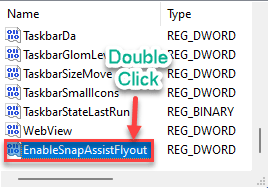

If you set its value to 0, background program windows and icons will be displayed. If you set its value to 1, no program windows will be displayed, only the default desktop wallpaper will be displayed. It can be used to decide whether the background windows and icons should be displayed or not. “ Thumbnail_icon_size” DWORD can be used to change icon size shown on thumbnails. For example set its value to 000000 to change hover color from White to Black. Just set its value to your desired color’s hex code. “ Thumbnail_focus_border_color” DWORD can be used to change hover color when you hover mouse cursor over thumbnails. You can set its value to 25 or 30 to get more transparency effect. “ Grid_backgroundPercent” DWORD can be used to customize transparency level of the main grid containing thumbnails. “ Grid_adjacentspacing” DWORD can be used to change spacing between thumbnails.

You can change thumbnails distance from left, right, bottom or top using these DWORDs. “ Grid_leftmargin” DWORD and other similar margin DWORDs can be used to change margins of thumbnails shown in the grid. Set its value to 10 or 20 and you’ll get nice dimming effect for the background. You can create above mentioned DWORDs in right-side pane of appropriate keys and set their values according to your requirements.įor example, “ BackgroundDimmingLayer_percent” DWORD can be used to change transparency level of the background wallpaper in these views. So if you want to customize UI of Alt+Tab screen, create the DWORDs in right-side pane of AltTabViewHost key, if you want to customize UI of Task View screen, create the DWORDs in right-side pane of AllUpView key and if you want to customize UI of Snap Assist screen, create the DWORDs in right-side pane of SnapAssistView key.įollowing is the exclusive list of all known DWORDs which can be created to customize UI of these multitasking views:Ī big thanks goes to our reader “ Anat” for sharing this ultimate list… The DWORD names and values will remain same for all 3 views. Now you’ll need to create new DWORDs in right-side panes to customize look of these views. So basically you’ll need to create 3 new keys under MultitaskingView key, if you want to customize UI of all 3 views i.e. If you want to customize UI of Snap Assist screen, set the new key name as SnapAssistView.If you want to customize UI of Task View screen, set the new key name as AllUpView.If you want to customize UI of Alt+Tab screen, set the new key name as AltTabViewHost.Right-click on MultitaskingView key and select New -> Key option and set the new key name as following: Now select the new MultitaskingView key and again you’ll need to create new keys under this key. It’ll create a new key under Explorer key, set the name of new key as MultitaskingView Right-click on Explorer key and select New -> Key option. Now you’ll need to create new key under Explorer key. HKEY_CURRENT_USER\SOFTWARE\Microsoft\Windows\CurrentVersion\Explorer Now type regedit in RUN box and press Enter. Press WIN+R keys together to launch RUN dialog box. If you also want to customize UI of Alt+Tab, Task View and Snap Assist screens, check out following simple steps: You’ll be able to change thumbnails size, grid margins, icons size, hover color, background window appearance, background transparency level and much more in these views.
SNAP ASSIST SETTINGS WINDOWS 10
Just drag-n-drop a program window to left-middle corner of your screen and Snap Assist will launch automatically to help you in using Aero Snap feature.īy default Windows 10 doesn’t allow to customize UI (User Interface) or look-n-feel of these multi tasking views but today in this tutorial, we are going to share lots of Registry tweaks which will help you in customizing all these views UI. Snap Assist view helps you in arranging running programs windows on screen by automatically showing a list of all running programs when you try to use Aero Snap feature. You can access Task View by pressing WIN+Tab keys together or by clicking on Task View icon on Taskbar. Task View is used to create multiple virtual desktops and each virtual desktop contains its own running programs list. You can access this view by pressing ALT and TAB keys together on your keyboard. Task View (also known as Virtual or Multiple Desktops)Īlt+Tab view is used to see and switch between running programs.In Windows 10 operating system, there are 3 main components present to use Multi Tasking View:


 0 kommentar(er)
0 kommentar(er)
